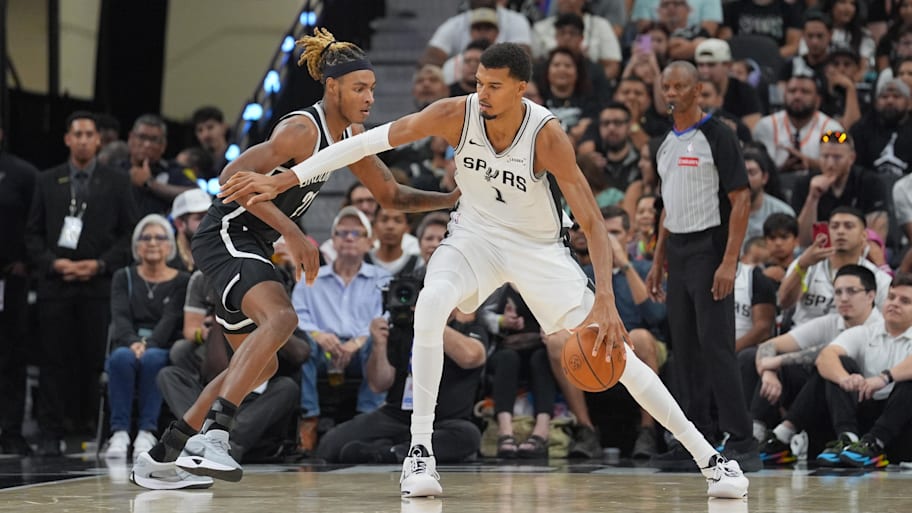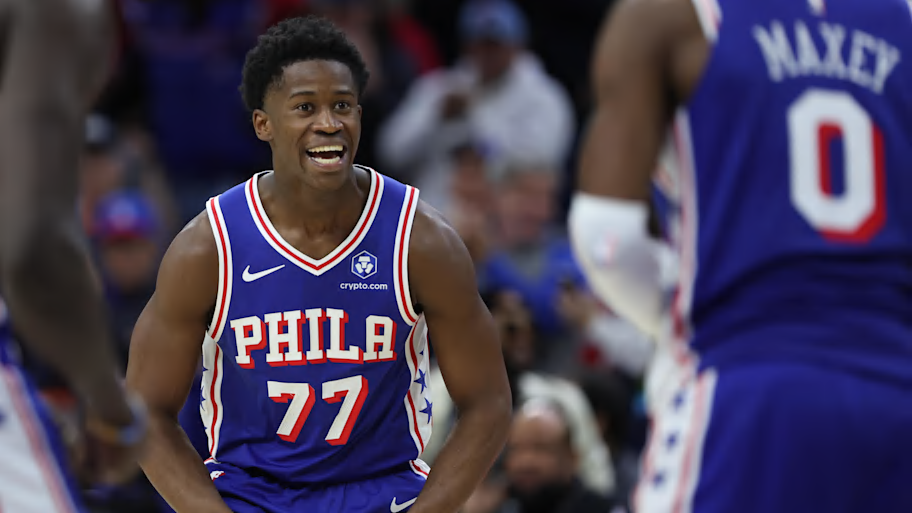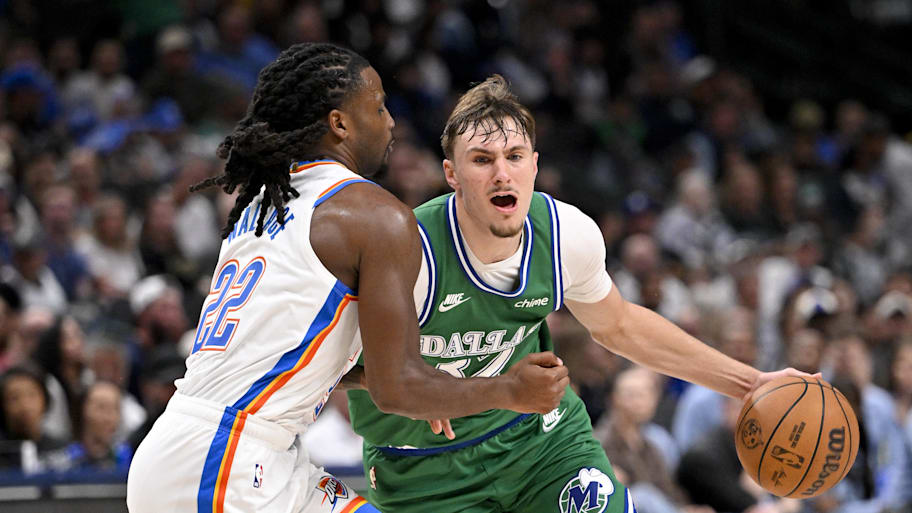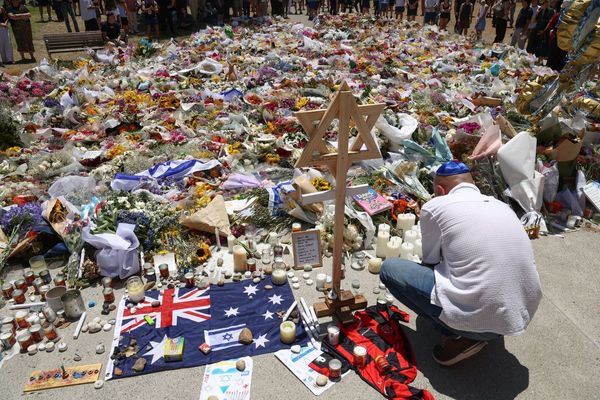
The new NBA season is fully underway, which means it’s time to wildly overreact to the first week of games.
By this point every team in the league has played at least four games. That’s just enough minutes for trends to emerge, both big and small. It’s also just enough time to make sweeping conclusions about a team, player or the NBA at large that are quite likely to be disproven in the coming months. Many a basketball pundit has fallen victim to the temptation to do just that.
But it’s part of the fun! Basketball is finally back on the calendar and it can be a blast to appreciate the weird quirks a handful of games will give us in terms of stats, narratives and everything else that goes into the game surrounding the game.
So, to that end, let us celebrate the return of the NBA. Here are five massive overreactions from the first week of play.
Victor Wembanyama is already the best player in the NBA
Wembanyama has gotten off to such a terrific start for the Spurs, this honestly feels like one of the more measured reactions that could stem from his first few games of the season. The San Antonio superstar has delivered in all the expected ways. He leads the NBA in blocks by a massive margin. Teams continue to cancel actions based on the mere sight of Wembanyama in the lane. And he continues to make shocking plays on the offensive end every night, from step-throughs that cover half the court to pull-up threes at the logo.
It’s all stuff we’ve seen in flashes from Wembanyama. But the French star has put it all together for extended stretches for really the first time this season and it has led to almost comical dominance. He was +31 in 29 minutes in the season opener and +35 in a win over the Raptors despite taking only eight shots. His free throw rate (the number of free throws shot per field goal attempt) is nearly triple what it was last season. Wembanyama is rounding out the rough edges of his game while continuing to excel in his strong areas, a development even the standard stats reflect; he’s averaging 31.0 points, 13.8 rebounds, 4.8 blocks and 1.5 steals per game.
From the moment he entered the NBA, Wembanyama was like a boulder in the middle of a stream; the game flowed around him, no matter who the Spurs were lined up against. But it was more of a reflection of his otherworldly physical dimensions than his true prowess as a basketball player. Now, though … Wembanyama is seizing control of every minute he’s on the floor and bending the flow of the game to his liking. The leap from a great player to a dominant one is often the hardest to make for budding NBA stars, and Wembanyama is making it look easy.
If this is the pace he’s setting, how could anybody else contend for the crown of best player in the NBA? Nikola Jokić isn’t as dominant on both ends and Shai Gilgeous-Alexander is too small to completely shut down parts of the court defensively like Wembanyama. Only Giannis Antetokounmpo comes close to a similar degree of two-way impact and even then the Greek superstar can’t threaten defenses from beyond the arc like Wembanyama.
Doing all that for a week is one thing. Doing it for a whole season is another. But the early returns suggest Wembanyama is very interested in seizing the crown of best player in the league with both hands and refusing to let go for a long, long time.
The Celtics are the worst rebounding team in modern history
Everyone knows the Celtics suffered a fatal talent drain over the offseason because of Jayson Tatum’s torn Achilles and the harsh penalties of the second apron. All in, Boston lost five rotation players. The remaining roster wasn’t completely barren of talent, bringing back Jaylen Brown, Derrick White and Payton Pritchard. But what went a bit under the radar was how, exactly, the roster was decimated in one key area: rebounding. It’s shown up as a huge issue through the team’s 1–3 start and may lead to all-time bad numbers if coach Joe Mazzulla can’t figure something out.
The Celtics lost all their best rebounders over the summer, due to a combination of injury, trades and free agency. Tatum, Kristaps Porzingis and Al Horford were the top three players in rebounds per game for the Celtics last season. Luke Kornet and Jrue Holiday ranked fifth and seventh, respectively. Combined they accounted for over 30 rebounds per game. As a whole the Celtics ranked eighth in rebounds per game last season and posted a defensive rebounding percentage of 72%, meaning they secured close to three out of every four rebounds after forcing a missed shot.
Those players were largely replaced with minimum-salary options who collectively are not nearly as prolific in the rebounding department, and it has absolutely killed Boston. The team’s defensive rebounding percentage has dropped like a rock to 61.6% over the first four games of the year. Their starting center, 7-footer Neemias Queta, has barely managed to outrebound his starting point guard, 6' 1" Pritchard. The Celtics have already lost multiple close games due to an inability to finish possessions by hitting the boards.
This would normally just be a below-average team performing at a below-average level and thus pass under the radar. But Boston’s roster is so flawed in this specific regard that it may set a record for the modern NBA.
Their current defensive rebounding percentage is several measures worse than last season’s 76ers, whose 67.8% is the worst mark recorded in the last 10 seasons. Stretching it to the last 15 years, the Celtics still rank well below the 2011–12 Warriors’ 65.8%. In fact, if Boston’s current mark held, it would be the worst percentage seen in the NBA since the 1996–97 Vancouver Grizzlies.
The bright side to those dire statistics? The C’s actually rank 29th in defensive rebounding percentage this season. The Pelicans, somehow, are worse, checking in at 59.9%. But New Orleans seems likely to improve given the roster’s personnel. The Celtics don’t have such hope. Their roster is designed in such a way that this is a feature, not a bug, and only slightly better luck will help them avoid an all-time bad season on the boards.
The Lakers do not need LeBron James
Who needs LeBron James when you have Luka Dončić and Austin Reaves?
With James out to start the season due to sciatica, the Lakers decided to lean into the heliocentric Dončić offense and experience it in full for the first time since acquiring the young superstar last season. He was apparently ready to remind everybody what he could do. Dončić scored 43 points in the season opener to pair with 12 rebounds and nine assists. He followed it up with 49 points, 11 rebounds and eight assists in only 34 minutes against the Timberwolves. Dončić was getting to his spot whenever he wanted and scoring at will, twisting defenses every which way with his patented stepbacks and pick-and-roll game. It was genuinely obscene greatness.
Then he got hurt. Dončić suffered a finger injury and a lower leg contusion that knocked him out after the Minnesota game. Which meant it was Reaves’s turn.
With the Lakers missing their two stars, Reaves was unlocked. He scored 91 points (!!!) over two games against the Kings and Blazers. His 51-point outing against Sacramento wasn’t the first 50-burger of the season, but just about nobody expected Reaves to be the first to hit that mark on this Lakers squad. It shows that Reaves is ready for a big season ahead of unrestricted free agency and that he can be more than just trusted to run the show sans Dončić or James—he deserves the opportunity to do so, even when they are healthy and on the court. It also suggests the Lakers could be very dangerous when all three are at 100% despite the flaws the roster presents.
It is also somewhat … terrifying that Dončić was able to do what he did despite dealing with multiple injuries. He was making the game look frighteningly easy with a bad leg and banged-up finger. The man has made 24 of 28 possible two-point attempts! There has to be a regression to the mean eventually but if this is what “Skinny Luka” is like then all his teammates need to do to win games is stand by and watch. Reaves going off to start the season in a similar manner is just a bonus.
This obviously tells us the Lakers can just ride Dončić and Reaves to glory. They’re averaging a combined 81.8 points per game. Who needs The King?
The Joel Embiid era is over for the 76ers
At the outset it seemed like the season possessed great potential for immense disappointment in Philadelphia—and perhaps the end of the Process as we know it.
Joel Embiid appeared only once in preseason as fans received familiar, vague updates on how he’s still recovering from a knee injury. Paul George underwent knee surgery in July and the team has neglected to offer an idea of when he might get back on the court. Sophomore guard Jared McCain, one of the only bright spots from last season’s disastrous campaign, got knocked out for over a month with a finger injury suffered in practice. It wasn’t hard, per se, to peer into the future and see a reality where the Sixers get healthy and occupy a top slot in the East standings this season; the conference is incredibly weak and Tyrese Maxey is a genuine top option offensively when healthy. But it felt like finding that path was akin to threading through the eye of the needle. Too much could go wrong and the Sixers have historically suffered through pretty poor luck across the board.
But the way their season has started begs the question: Is it the beginning of the VJ Edgecombe era and the end of the Embiid era?
Edgecombe, the No. 3 pick in the draft and the fruit of the franchise’s bitter woes last season, has been on fire to start his NBA career. His production is historic; he ranked third all-time with 34 points in his debut and combined with Maxey to score the most points of any backcourt since 1970. His frantic kinetic energy has him flying around the court at the blink of an eye and he’s been at the center of all four of Philly’s wins. It is no grand claim to say the Sixers wouldn’t be undefeated without the rookie guard given Embiid’s nightly minutes restriction and the complete absence of George.

It’s been really fun to watch. Edgecombe wasn’t supposed to be this good this quickly—but he is. Over his first four games the Baylor product is averaging 22.3 points, 5.8 rebounds and 5.3 assists per game while draining 42.9% of his threes on over seven attempts per game. Those are All-Star numbers. And he’s a rookie!
Edgecombe has been so good it’s tempting to declare the Embiid, and therefore the Process, era over. The former MVP center has managed to only show flashes of his old self in the last two years. In between those flashes he looks very much the part of a 7-footer suffering the consequences of multiple lower body injuries throughout a physical NBA career. Even if he does manage to play at the level we’re accustomed to seeing there’s little expectation Embiid could keep it up before getting hurt again. His story in Philly isn’t done being written but enough chapters have been read to know, with a good degree of certainty, what comes next: more injuries, more frustration and not a lot of winning for a player slated to make nearly $60 million annually in the coming years.
Edgecombe, on the other hand, is a blank book upon which even the most unlikely hopes of the Philly faithful can be written. The future of the Sixers with him in the fold is wide open. He’s young, talented and cheap with all the potential in the world. Paired with his electrifying backcourt mate and it suddenly becomes much easier to see a future in which the franchise competes regularly and keeps pace with the league’s better teams.
Even if it’s not over, the Process era is at least coming to a close. Maxey and Edgecombe are the future of Philadelphia.
Cooper Flagg is flopping under the weight of expectations
A widely heralded prospect with significant hype around his NBA debut, Flagg has been riding the struggle bus to begin his professional career. The No. 1 pick in the 2025 draft is averaging 13.0 points, 5.3 rebounds and 2.5 assists per game. He’s scored fewer points than Grizzlies forward Cedric Coward, taken 11th, and has the most total turnovers in his class so far. Flagg’s team is 2–3 with him in the starting lineup. Can you say bust?!
Now, the logical mind understands that Flagg is not exactly being set up to succeed. The Mavs are playing with one hand tied behind their back offensively until Kyrie Irving returns from a torn ACL; D’Angelo Russell has been a poor imitation thus far. It makes for a cramped floor without his creation or shooting. Furthermore, Flagg was tabbed as a forward coming out of school and the standard Dallas lineups to start this season have him playing alongside three other forward-ish players in Anthony Davis, P.J. Washington and Dereck Lively II. It’s awkward and would put Flagg out of position even if coach Jason Kidd hadn’t decided to throw Flagg into the deep end.

Which brings us to the crux of the matter and the primary reason he’s been having a tough time: Kidd has Flagg playing point guard. Russell is coming off the bench and it’s been a few years since Klay Thompson was capable of regularly initiating actions, which leaves Flagg as the primary ballhandler during most of his minutes. And it has been going about as well as you’d expect! Young players who have played the point all their lives usually struggle to adjust to NBA speed and schematic adjustments. Flagg is a forward being asked to play point guard for the first time, and on a team without much shooting to give him space to work. That’s the same thing as playing a video game for the first time on the hardest difficulty and a semi-broken controller.
So through that lens, maybe it hasn’t gone all that bad! In a sink-or-swim situation Flagg has at least found a way to tread water. His best game so far, a 22-point outing against the Raptors, was efficient and featured all the highlights expected from a prospect of his caliber. He’s pulling down plenty of rebounds despite playing alongside multiple big men. And the worst game of his young career thus far—a two-point showing against the defending champion Thunder—was largely caused by a shoulder injury suffered in the first minute that he battled through to stay on the court. Toughness is an important intangible even if the organization would undoubtedly rather their prized prospect take a seat instead of play through pain.
There’s a certain amount of trusting the process happening in Dallas. Kidd helped turn Giannis Antetokounmpo into the two-way monster he is by forcing him out of his comfort zone to run point guard in his early years. Clearly the vision is the same with Flagg. Get the lumps out of the way early, the talent will shine through regardless, and when it all comes together … Oh, boy.
But such nuance is for later in the season. For now we can all overreact to the impression that Flagg’s transition to the NBA isn’t going to be as seamless as it was chalked up to be.
More NBA on Sports Illustrated
Listen to SI’s NBA podcast, Open Floor, below or on Apple and Spotify. Watch the show on SI’s YouTube channel.
This article was originally published on www.si.com as Five Wild Overreactions From the First Week of the NBA Season.







